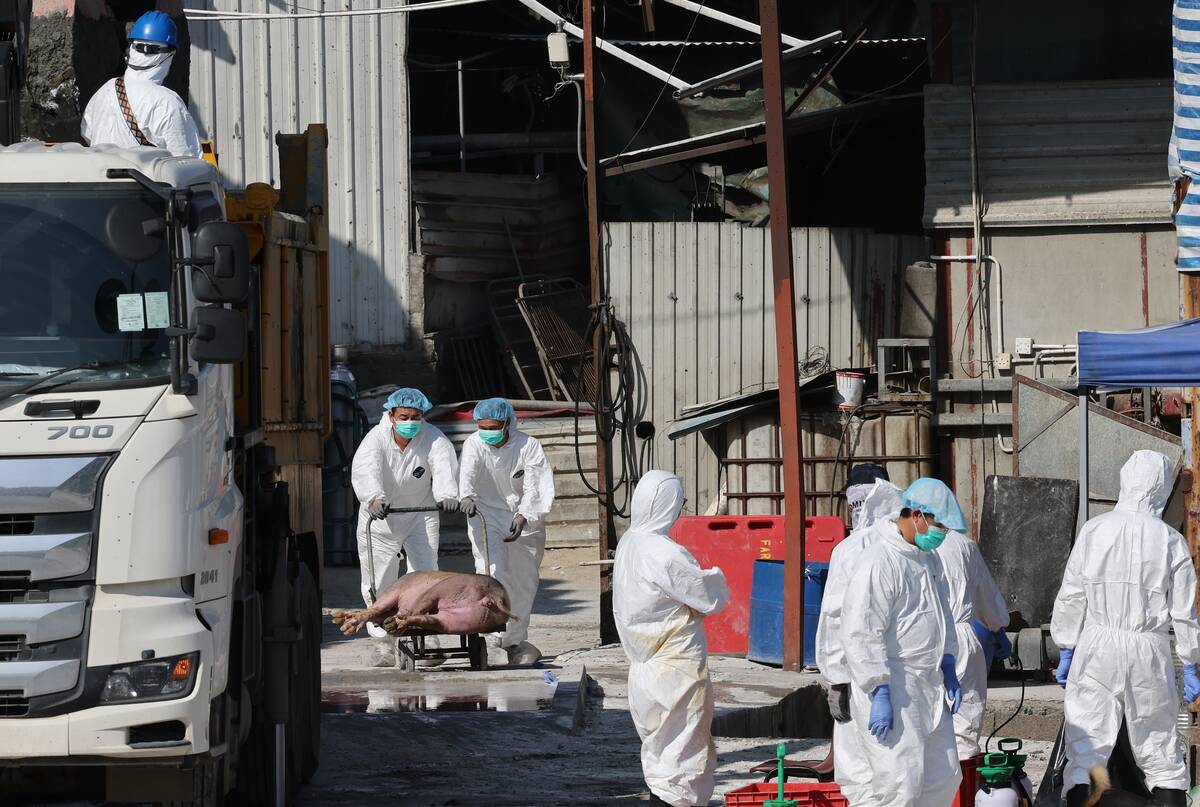ELLERSLIE, Alta. – As a fashion model Florette Schnelle learned about quality clothing on the runway, but never gave much thought about where the fabric came from.
Now as the co-owner of one of the largest alpaca ranches in Canada, she has learned first-hand what it takes to produce quality yarns and fabrics.
Schnelle and her partner Kenn Schurek got into the alpaca business in 1986 after visiting Peru where the soft, woolly animals are considered a national treasure. There are 2.5 million alpacas in the world but the Peruvian government is reluctant to sell any so the couple exported 10 from Chile via the United States.
Read Also

Mixed results on new African swine fever vaccine
The new African swine fever vaccine still has issues, but also gave researchers insight into how virus strain impacts protection against the deadly pig disease.
They laugh about their early days of trial and error with these animals because no one in this country was sure how to raise them. They got some advice from llama breeders and struggled the rest of the way.
“Of all the things that were a huge crisis for the first year, now we don’t even give it a second look any more. There was nobody who was a contact person because nobody had them,” said Schurek.
Learned their lessons
They obviously learned their lessons well for they’ve become one of the largest breeders outside South America. Their two-site Royal Canadian Alpaca Ranch has a herd of 85 at Ellerslie, on the outskirts of Edmonton, and another ranch in Australia with about 800 alpacas where the hair is destined for the textile industry. Schurek, who handles marketing, visits the Australian operation three to four times a year.
For someone with no farming background, Schnelle finds the lightweight animals easy to care for with the help of a ranch manager. A cousin to the llama, alpacas are about 1.5 metres tall and carry more hair. They have a gentle disposition and a friendly curiosity.
They graze over the 20 acres of land on her acreage and eat two bales of hay each per month. Manure is deposited in a few neat little piles in the pasture. Alpacas have evolved over 6,000 years in the mountains of Peru into hardy animals with almost no health problems. Birthings are easy and happen during daylight hours.
“It’s like God created the perfect animal,” she said.
Schnelle and Schurek run about four females to one male. They made sure when buying the animals to get a high proportion of males for a variety of outcrosses.
Selling breeding stock to investors is a small part of the business. Their main interest is a clothing line of designer sweaters, coats, capes and women’s suits designed by Schnelle and manufactured by her friend, designer Helen Hammon who works in Vancouver.
Special sweaters
Soft to the touch, the sweaters are nonallergenic, blend well with other natural fibres and don’t itch. Alpaca fibre is similar to human hair in that it’s smooth rather than scaled like wool. By hand washing with human shampoo and conditioner, these handmade sweaters will last for years, she said.
Alpacas produce natural black, pure white to varying shades of brown fibre, all of which can be spun using the natural color. As a geneticist Schurek was interested in learning if they could breed for color but they have found the hair coat of each cria (baby) is totally unpredictable.
The fibre holds dye well. About half a kilogram is required to make an adult sweater and one alpaca would produce enough wool per shearing to make 10 sweaters. Sweater prices start at $250. A 50-gram ball of yarn sells for $6.75.
Alpacas are sheared every 18 months although in Australia they are trimmed about once a year, said Schnelle. It takes about 15 minutes to shear and they leave a topknot with bangs to shade the alpacas’ eyes.
The ranch holds two to three fashion shows each year where Hammon’s and Schnelle’s designs are shown and can be purchased. Most of the clothing is sold off the farm although some retail outlets have approached them to supply sweaters.
Besides clothing the Australians are using the yarns for delicate items like baby blankets because the fabric is non-irritating. The Japanese have used alpaca for fine carpeting.
Schnelle said natural fibres like alpaca will be a hot trend and people will want to learn about the animal.
“This is an environmentally perfect animal.
“When people talk about the sweater they’re wearing, they’ll be able to talk about the environment, what the animal does to the environment, the fibre, the care of the animal and the rarity of it.”















